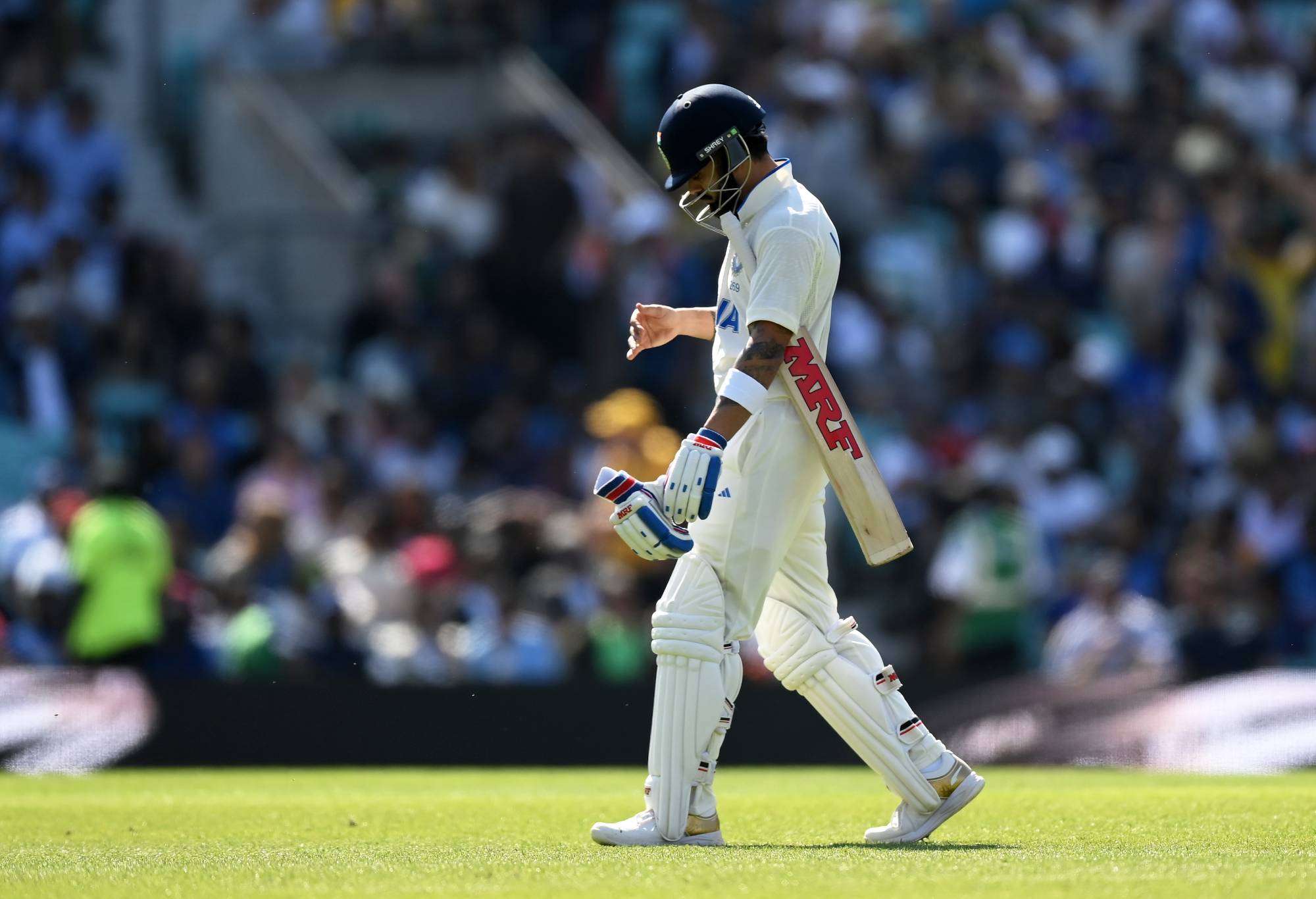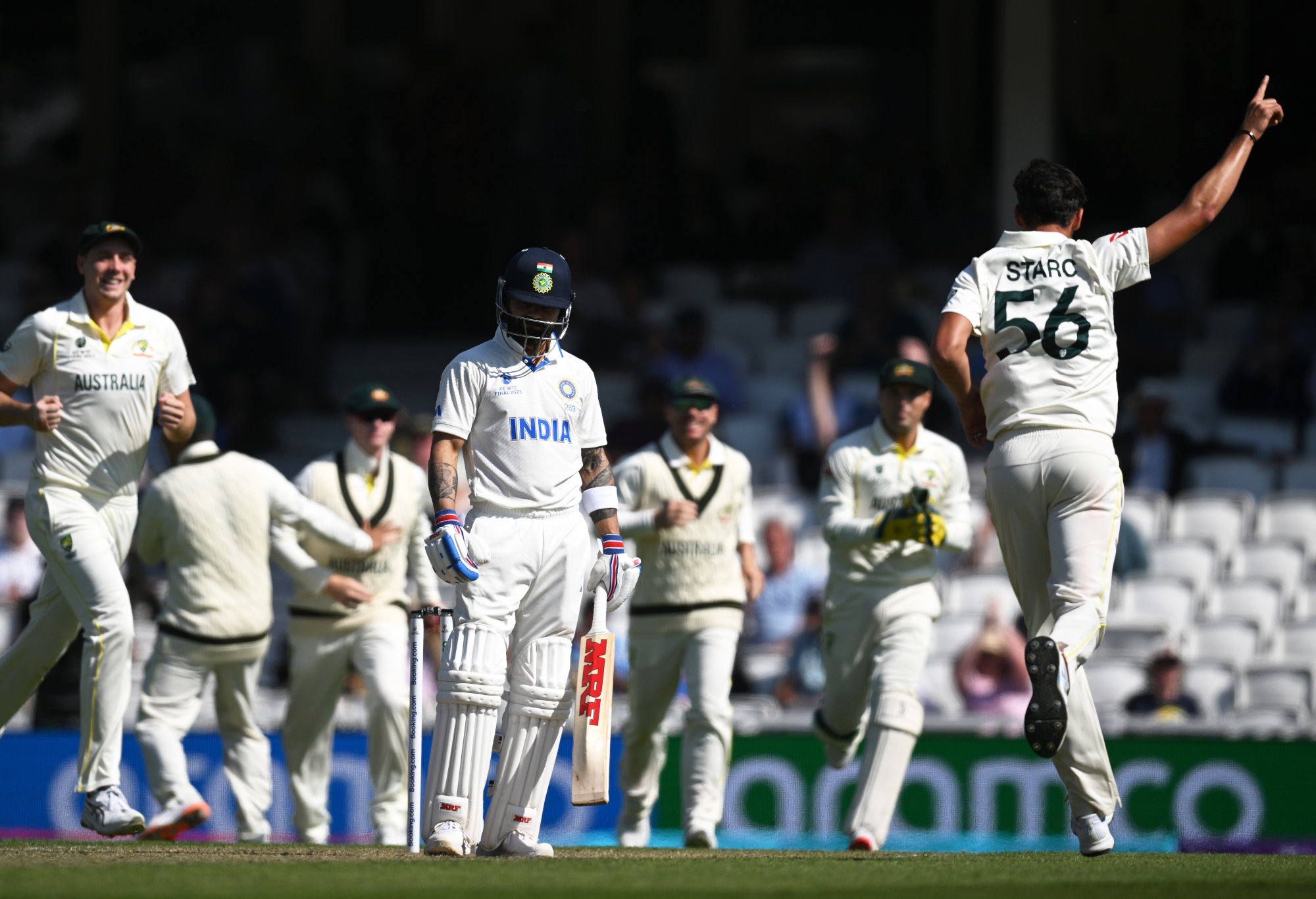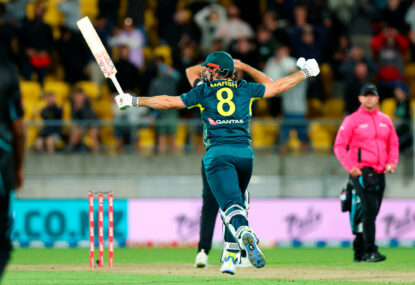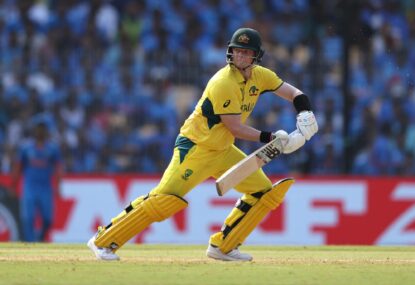The first two days for India in the WTC final did not go the way that they would have hoped. Travis Head and Steve Smith were at the forefront of Australia’s outing putting together a 285-run partnership as the Aussies posted a considerable total of 469. In reply, India have a total of 150/5 at the close of the second day’s play, 318 behind Australia. India’s start to the final was severely impacted by their planning and the bowling composition that they settled on.
It is clear that have seemingly overthought their selection process. The Indian management have fallen into the trap of thinking the conditions of the pitch would be far more different from how it normally plays in international Test matches due to it being the first time a Test had been played at the venue in the month of June.
As part of my WTC final preview, I had a look at county cricket matches played in the months of May, June, and July from 2012 to 2022 to get a gauge of how the pitch plays around this time of the year.
The pitch during this timeframe want not any more bowler-friendly than in September and was still a batter’s paradise. There were 17 instances where teams scored over 400. Twelve of these scores over 400 came from the side batting in the first innings.
In comparison, there were 13 occasions where teams were all-out for under 200 in an innings. In only one occurrence, the team batting first get dismissed for under 200, while the team batting second lost all 10 wickets in their first innings 5 times.
Part of the reasoning to go with Shardul Thakur over Ravi Ashwin was Thakur’s supposed batting ability against pace outside of Asia would help fortify India’s batting. It is clear to see that with the amount of grass on the pitch that India thought the game would be dominated by the pacers. This led to the brains trust headed by Rahul Dravid to feel the need for an extra pacer and added lower-order batting help as the way to go. The issue with this rationale though is that India’s strategy does not play to their strengths.
India already has a lack of bowlers that have thrived in England in their current WTC squad. Only Umesh Yadav and Ravi Ashwin have averaged under 30 with Yadav having only played two Tests in England. Ashwin also has a phenomenal county record where in 10 matches across three seasons, he has 61 scalps at an average of 25.32 with seven 5+ wicket hauls. This included taking 6/27 at the Oval in July 2021 as Surrey bowled Somerset out for 69. Effectively, India has dropped their best bowler in English conditions that is available to them.
Moreover, Thakur’s batting average of 24.40 is only marginally better than Ashwin’s average of 23.72. Ashwin has shown he is more than capable with the bat in hand in county cricket as well with him scoring 553 runs at 36.86. Thakur’s first-class batting average is 16.39 which has raised questions over whether he would be able to sustain the batting numbers he has put up in his short Test career so far.
Especially, on a pitch that is traditionally a haven for batsmen, marginally better lower-order batting ability is not as important as the difference in bowling average in England of 5.2 with Ashwin possessing a bowling average of 28.11 in England in comparison to Thakur’s 33.37.
It’s also not just about picking Thakur ahead of Ashwin specifically. The other problem with India picking four pacers is the lack of diversity between them which affects their ability to work effectively as a unit. At the height of the Indian pace attack in recent years, their bowling unit was centred around the three of Jasprit Bumrah, Mohammed Shami, and Ishant Sharma. They all had differences between them in their bowling styles that accentuated each other’s strengths and helped them bowl effectively as a unit. Bumrah has a unique action and brings extra pace, Shami is a short skiddy bowler with his seam presentation being a work of art and Ishant Sharma is a tall swing bowler who possesses extra bounce.

Virat Kohli of India makes his way off after being dismissed during day two of the ICC World Test Championship Final. (Photo by Alex Davidson-ICC/ICC via Getty Images)
The fearsome Australian ‘big 3’ of Cummins, Hazelwood, and Starc work so well together because of how different they are as bowlers to each other. Hazelwood is a metronomic bowler who pitches the ball on a good length, Starc is a left-handed strike bowler who can get the bowl to swing at pace while he typically pitches the ball up and releases the ball from closer to the stumps when bowling from over the wicket.
Meanwhile, Cummins bowls back of a length and has a fierce bouncer. Even with Hazelwood out with side soreness, Australia have replaced him with a like-for-like bowler in Scott Boland. Boland is also an accurate seam bowler who bowls it on a good length. While also a tall man, Boland buckles his knee when landing at the crease which lowers his release point and exaggerates the height difference the ball is being released from between him and his bowling partners.

Mitchell Starc celebrates the wicket of Virat Kohli. (Photo by Justin Setterfield/Getty Images)
The same can not be said for India’s current pacers in the WTC final of Shami, Siraj, Yadav, and Thakur. The only quick with a point of difference is Thakur who is slightly shorter, swings the ball and bowls at a slower pace. The three of Shami, Siraj, and Yadav are of the same height, have similar release points, bowl at close to the same speeds and all three predominantly get the ball to seam. With how alike the trio are, there isn’t a need to play all three of them because of the sameness to the attack that they create.
The heights of the Indian pacers are as follows:
Mohammed Shami – 178 cm
Mohammed Siraj – 178 cm
Umesh Yadav – 178 cm
Shardul Thakur – 173 cm
Even England who have been criticised for not having enough diversity in their attack when they toured Australia in the recent Ashes series has bowlers of various heights and release points.
The English pacers’ heights stand at:
Stuart Broad – 198 cm
Ollie Robinson – 196 cm
James Anderson – 188 cm
Mark Wood – 183 cm
Stuart Broad and Ollie Robinson can extract extra bounce while bowling from a higher release point while Mark Wood is one of the fastest in the world and get the ball to skid on. James Anderson releases the ball from an in-between height compared to Broad, Robinson, and Wood while getting the ball to swing more than most in the world can.
Since 2021, as the selectors have moved on from Ishant Sharma, the Indian pace attack has declined in effectiveness. From 2018 to 2020 when the focal point of the pace attack was Bumrah (14 Tests), Shami (15 Tests), and Sharma (11 Tests), Indian pacers in the pace-friendly conditions of Australia, South Africa, England, and New Zealand averaged 25.64. Since 2021, the average of Indian pacers in these countries has risen to 29.79. Bumrah has still bowled the most overs of any Indian quick since 2021, however, the core of the Indian bowling attack has changed to a four-bowler lineup of Bumrah (10 Tests), Shami (9 Tests), Siraj (10 Tests) and Thakur (8 Tests) with Umesh Yadav (3 Tests) remaining as a backup. Sharma (3 Tests) has not played a Test since 2021.
A massive defect of this new-look core has been an ability to contain batsmen to create pressure. Since 2021, the only Indian quicks to have an economy of under 3 are Jasprit Bumrah and Ishant Sharma at 2.72 and 2.78 respectively. Shami has gone at economy of 3.15 in this time, Siraj at 3.51, Thakur has gone 3.61 and Yadav has leaked 3.79 runs per over. When one of the only two quicks that have displayed a consistent ability to choke the run rate is currently injured and the other hasn’t played in two years, things aren’t going to look too swell.
This again points to a lack of diversity in the abilities of chosen Indian quicks for the WTC final. All four are bowlers who can take wickets but also go for runs. They don’t have a workhorse whose role it is to build up dot balls in order to frustrate the batters and force a mistake. The four of Shami, Siraj, Thakur, and Yadav have all consistently bowled 1 or 2 loose balls to allow the pressure to ease. What’s more is that when an aggressive batsman has gotten on top of them, they lack the ability to go to a plan b or plan c and look to restrict the free flow of runs by falling back to a tighter line and length.
India’s questionable strategy and team construction have put them on the back foot for the first half of the WTC final and will now need a herculean effort to claw their way back to level footing in the game.





































































































